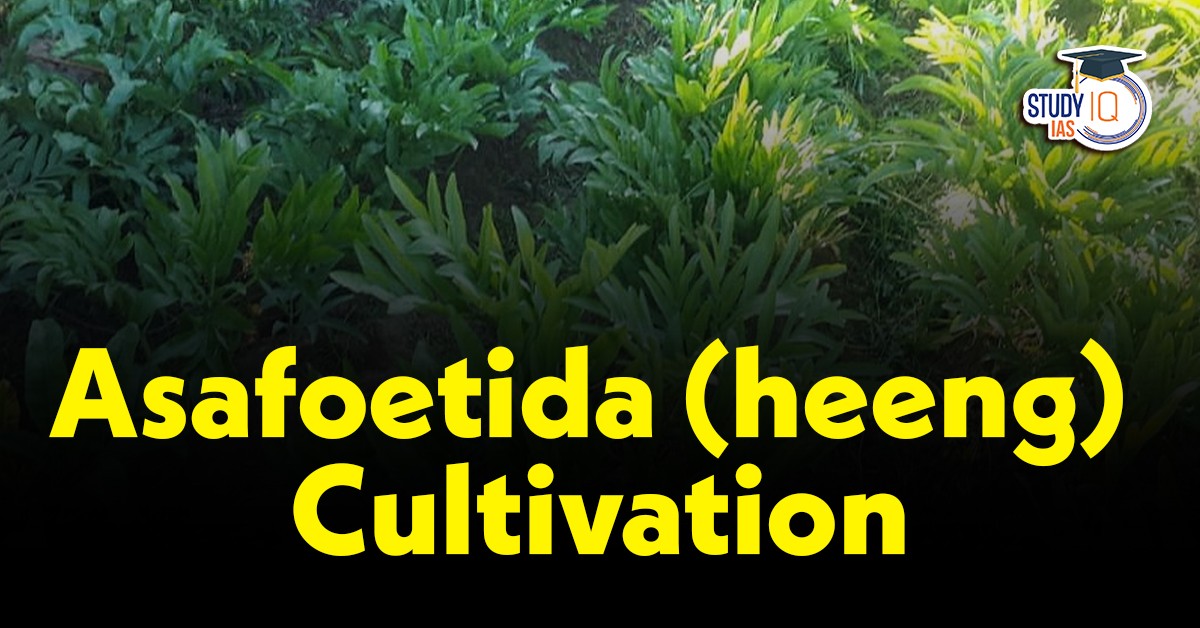Table of Contents
Context: CSIR-IHBT has reported the first successful flowering and seed setting of asafoetida (heeng) at Palampur, Himachal Pradesh, marking a significant milestone in its acclimatisation and domestication on Indian soil.
What is Asafoetida (Heeng)?
- Botanical Name: Ferula assa-foetida, a perennial herb.
- Common Name: Heeng in India.
- Source: Derived from the oleo-gum resin of the plant’s taproot.
- Usage: Widely used as a spice and medicinal agent in Indian cuisine and Ayurveda.
- Ancient Mentions: Found in Charaka Samhita, Mahabharata, and Panini’s texts.
Key Features of Asafoetida
- Long Maturation: Requires 5 years to mature before flowering and resin extraction.
- Resin Yield: Oleoresin forms 40–64% of the dried gum extracted from its roots.
- Drought Tolerant: Survives harsh winters and minimal water; remains dormant in extreme cold.
- Medicinal Uses: Treats digestive issues, bloating, abdominal pain, and helps stimulate metabolism.
- Cultural Role: Used in rituals, cooking, and traditional medicine.
Asafoetida Cultivation Zones
- Native Habitat: Cold arid regions of Iran, Afghanistan, and Central Asia.
- Ideal Conditions:
- Sandy, well-drained soil.
- Low rainfall (<300 mm).
- Temperature range: –4°C to 40°C.
- Potential Indian Zones:
- Lahaul-Spiti, Kinnaur, Uttarkashi, and similar high-altitude valleys.
Significance of Indigenous Cultivation of Asafoetida
- Self-Reliance Goal: India was 100% import-dependent, but now moves towards domestic production.
- Breakthrough in Adaptation: Successful flowering and seed set at Palampur, Himachal Pradesh (1300 m altitude), showing adaptability beyond cold desert zones.
National Importance
- Heeng Germplasm Resource Centre established in 2022.
- Development of tissue culture labs to scale up cultivation efforts.


 Places in News for UPSC 2026 for Prelims...
Places in News for UPSC 2026 for Prelims...
 Lake Natron: Location, Features, Wildlif...
Lake Natron: Location, Features, Wildlif...
 Erra Matti Dibbalu Added to UNESCO Tenta...
Erra Matti Dibbalu Added to UNESCO Tenta...

























